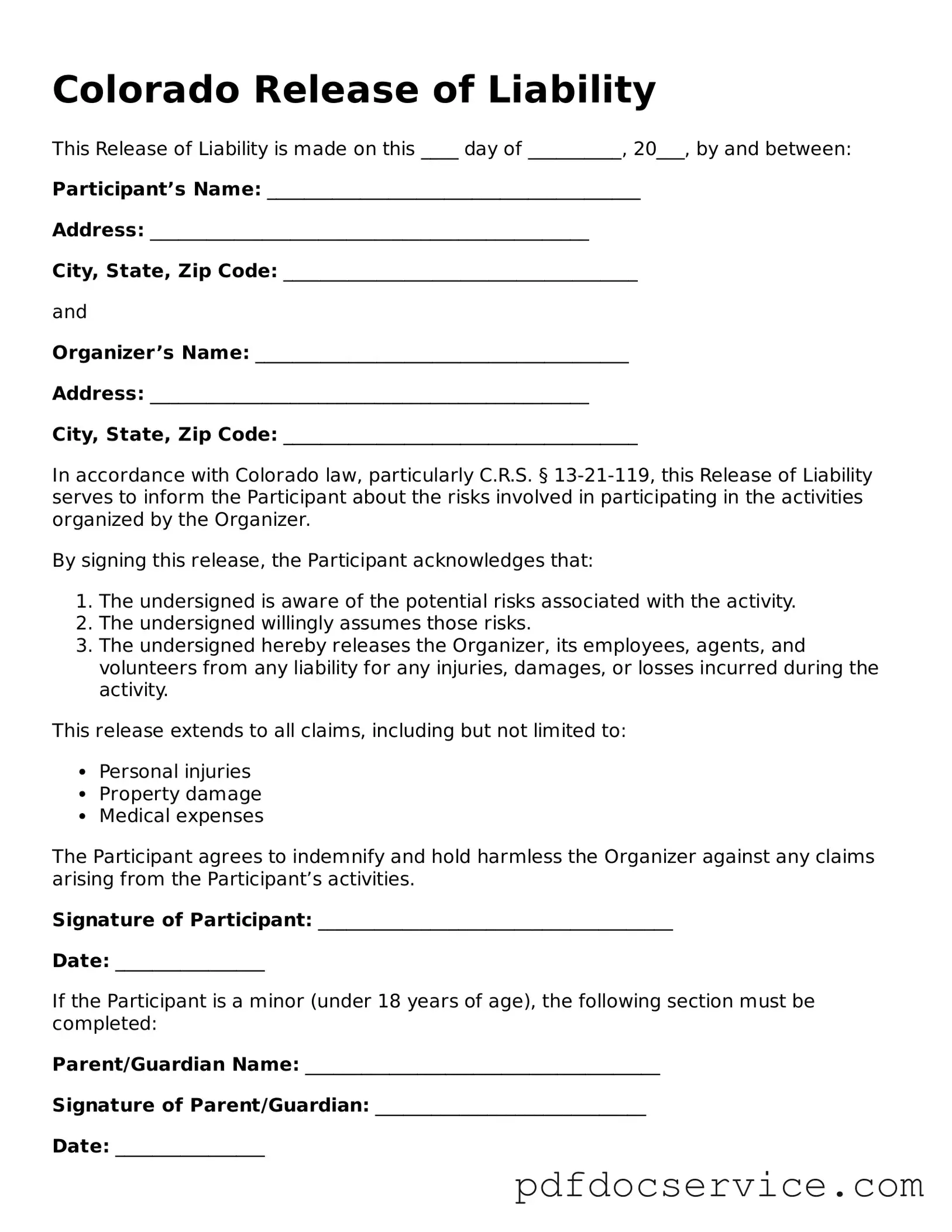A Colorado Release of Liability form is a legal document that protects an individual or organization from being held liable for injuries or damages that may occur during a specific activity or event. This form is commonly used in situations involving recreational activities, sports events, and other scenarios where risks are present. By signing this document, participants acknowledge the risks involved and agree not to hold the organizer responsible for any resulting injuries.
You should use a Release of Liability form whenever you are organizing an event or activity that involves potential risks. This includes but is not limited to:
-
Sports events
-
Outdoor activities like hiking, climbing, or rafting
-
Workshops or classes involving physical activities
-
Any situation where participants may face injury or damage
Using this form can help minimize legal exposure and clarify the responsibilities of all parties involved.
Yes, a Release of Liability form is generally enforceable in Colorado, provided it meets certain legal standards. The form must be clear and unambiguous, stating the risks involved and the rights being waived. Additionally, it should be signed voluntarily by the participant. However, courts may not enforce a release if it is deemed unconscionable or if it involves gross negligence or willful misconduct.
While it is not strictly necessary to hire a lawyer to create a Release of Liability form, it is highly recommended. Legal expertise can ensure that the form complies with Colorado law and adequately protects your interests. A lawyer can help tailor the document to your specific situation and address any unique risks associated with your activity.
A comprehensive Release of Liability form should include the following elements:
-
Identification of the parties:
Clearly state the names of the organizer and the participant.
-
Description of the activity:
Provide a detailed description of the event or activity involved.
-
Assumption of risk:
Include a statement where the participant acknowledges understanding the risks associated with the activity.
-
Waiver of liability:
Clearly state that the participant waives their right to sue for injuries or damages.
-
Signature and date:
Ensure that the participant signs and dates the form, indicating their agreement.
Minors cannot legally sign a Release of Liability form on their own. Instead, a parent or legal guardian must sign on behalf of the minor. This signature signifies that the guardian understands the risks and agrees to the terms of the release for the minor. It is crucial to ensure that the language in the form clearly indicates that it applies to minors as well as adults.
